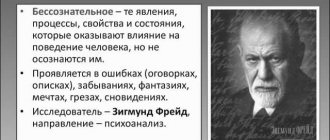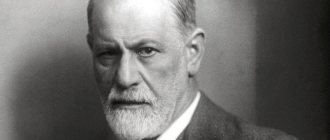One of the incredible and very talented people, whose creations still do not leave any scientist indifferent, is Sigmund Freud (whose years of life and death are 1856-1939). All his works are in the public domain and are used in the treatment of most people.
The biography of Sigmund Freud is rich in many events and incidents. Briefly about the main thing you can learn from this article.
Psychoanalyst, neurologist, psychologist - all this is about him. He managed to reveal many of the secrets of our invisible consciousness, get to the truth of human fears and instincts, understand the secrets of our ego and leave behind an incredible store of knowledge.
Sigmund Freud: date of birth and death
The famous scientist was born on May 6, 1856, and died on September 23, 1939. Place of birth: Freiberg (Austria). Full name: Sigmund Shlomo Freud. Lived to be 83 years old.
Freud Sigmund lived the first years of his life with his family in the city of Freiberg. His father (Jakob Freud) was an ordinary wool seller. The boy loved him very much, as well as his half-brothers and sisters.
Jacob Freud had a second wife - Amalia, Sigmund's mother. There is a very interesting fact that Freud’s maternal grandmother was from Odessa.
Until the age of sixteen, Sigmund’s mother lived with her family in Odessa. Soon they moved to live in Vienna, where the mother met the father of the future talented psychologist. Since she was almost half the age of Jacob, and his older sons were her age, people started a rumor that one of them was having an affair with his young stepmother.
Little Sigmund had his own brothers and sister.
Childhood period
Freud's childhood was quite difficult, since it was precisely because of the events experienced during that period that the young psychologist was able to draw interesting conclusions related to childhood in general and the problems of adolescence in particular.
So, Shlomo lost his brother Julius, after which he felt shame and repentance. After all, he did not always show warm feelings towards him. It seemed to Freud that his brother was taking a lot of time from his parents, and therefore they did not have enough strength for their other children. After this, the future psychoanalyst made two verdicts:
- All the children in the family consider each other special rivals, without realizing it. They often wish the worst for each other.
- Regardless of how the family positions itself (friendly or unfavorable), if a child feels guilty about something, he develops various nervous diseases.
The biography of Sigmund Freud was predicted by his mother even before his birth. One of the fortune tellers once told her that her first child would be very famous and smart, would be distinguished by a special mindset and erudition, and in a few years the whole world would know about him. This made Amalia too sensitive to Sigmund.
In his first years of life, Freud was indeed different from other children. He began to speak and read early, and went to school a year earlier than other children. He had no problems with speech. Freud knew how to express his point of view well. It is incredible that such a great man could not stand up for himself, and was even bullied by his peers. Despite this, Freud graduated from high school with flying colors. Then it's time to think about the future.
Studying at the University
Having successfully graduated from high school, Sigmund Freud entered the medical department of the University of Vienna. Medicine did not attract him, but prejudice against Jews was so great that the choice of further career was small: business, trade, law or medicine. So he connected his future with medicine simply by elimination. Freud had a rather humanitarian mindset; he knew French, English, Spanish and Italian perfectly well; German was practically his native language. In his youth, he was fond of reading the works of Hegel, Schopenhauer, Nietzsche, and Kant. At the gymnasium he received prizes more than once for his literary works.
At the university, Freud, in addition to his studies, successfully engaged in scientific research; he described the previously unknown properties of nerve cells in goldfish, and studied the reproductive characteristics of the eel. During the same period, he made a fatal discovery - Freud began to use cocaine to treat certain diseases, he himself used it, since the influence of this substance significantly increased performance. Freud considered it almost a panacea, and abandoned the use of cocaine only when it was proven that cocaine was addictive and had a destructive effect on humans.
Personal life and family of a scientist
The professional biography and personal life of Sigmund Freud are closely intertwined. It seems that it was love that pushed him to magnificent discoveries.
Medicine came easily to him, with the help of various diagnostic conclusions he came to psychoanalysis and made his own conclusions, made small observations and constantly wrote them down in his notebook. Sigmund knew that he could become a private doctor, and this would give him a good income. And he needed it for one big reason - Martha Bernays.
Sigmund first saw her when Martha came to his sister's house. Then the heart of the young scientist caught fire. He was not afraid to be frank and knew how to behave with the opposite sex. Freud's beloved received a gift from him every evening - a red rose, as well as a proposal for a meeting. This is how they spent their time secretly, because Martha’s family was very rich, and her parents would not allow an ordinary Jew to marry their daughter. After the second month of meetings, Shlomo confessed his love to Martha and proposed marriage. Despite the fact that her response was reciprocal, Martha’s mother took her out of town.
Young Shlomo decided not to give up and fight for marriage with the young beauty. And he achieved this after entering private practice. They lived together for more than 50 years and raised six children.
Quotes
- “Love and work are the cornerstones of our humanity.”
- “The task of making man happy was not part of the plan for the creation of the world.”
- “The voice of intellect is quiet, but it never tires of repeating – and there are listeners.”
- “You never stop looking for strength and confidence outside, but you should look within yourself. They have always been there."
- “In a number of cases, falling in love is nothing more than a psychic capture by an object, dictated by sexual primary urges for the purpose of direct sexual satisfaction and, with the achievement of this goal, fading away; this is what is called base, sensual love. But, as we know, the libidinal situation rarely remains so uncomplicated. Confidence in a new awakening of a need that had just died out was probably the immediate motive why the capture of a sexual object turned out to be long-lasting and it was “loved” even during those periods of time when there was no desire.”
- “Just today my deceased daughter would have turned thirty-six years old... We are finding a place for the one we lost. Although we know that the acute grief after such a loss will be erased, we remain inconsolable and will never be able to find a replacement. Everything that stands in an empty place, even if it manages to fill it, remains something else. That's how it should be. This is the only way to prolong the love that we do not want to renounce.” — from a letter to Ludwig Binswanger, April 12, 1929.
Freud's practice and innovations
The chosen profession enriched him financially and morally. The young doctor was going to help people; in order to do this, he had to try out the established techniques on himself. Knowing some of the techniques that he became familiar with in the hospitals where he trained, Freud put them into practice based on the patient's problems. For example, hypnosis was used to penetrate the patient's old memories and help him find the problem that was tearing his flesh apart. Baths or massage showers were practiced to treat nervous aggravations. One day, S. Freud came across research on the benefits of cocaine, which did not gain wide popularity at that time. And he immediately tried the technique.
Freud was sure that this substance did more good than harm. He spoke about the connection of thought and body, that after experiencing bliss, all stress evaporates and goes away. He began to recommend this method of using cocaine to other people, after which he really regretted it.
It turned out that such methods are completely contraindicated for people suffering from acute mental neuroses. Most indicators deteriorated after the first use, and it was almost impossible to restore them. And for Freud this meant only one thing: one must look for the cause of all diseases in the human subconscious. And then the psychoanalyst did the following: he divided parts of life into separate fragments, looked for a problem in them and came up with his own hypothesis of the disease. To better understand his own patients, he came up with the method of free association. This method was used in this way: the psychologist named certain words that could somehow influence the patient’s psyche, and in response he named other words that first came to his mind. As Freud argued, in this way he directly explored the psyche. All that remained was to correctly interpret the answers.
This new approach to psychoanalysis amazed thousands of people who came to his sessions. The recording was made years in advance. This was the beginning for the development of their own theories.
The book “A Study of Hysteria” in 1985 brought even more fame to the scientist, in it he identified three components of the structure of our consciousness: id, ego and superego.
- Id is a psychological component, unconscious (instinct).
- Ego is a person's own motives.
- Superego - the norms and rules of society.
The entire book describes these factors in interrelation. To understand this process, you need to understand the relationship of each of them to the person as a whole. Such a scientific development seems too complicated and abstruse, but Freud easily explains it with a simple example. The first factor may be the student’s feeling of hunger in class, the second may be appropriate actions, and the third may be the awareness that these actions will be wrong. From this it follows that the human ego regulates the process between the id and the superego. Thus, the student will not eat during class. Knowing that this is not accepted, he will be able to restrain himself. Then it turns out that people who do not regulate the ego process have various mental disorders.
Developing this idea, the scientist derived the following personality models:
- Unconscious.
- Preconscious.
- Conscious.
In 1902, a community of psychoanalysts was founded, which included famous scientists such as Otto Rank, Sandor Ferenczi, and others. Freud took an active position in this cell. Periodically wrote his works. Thus, he presented the work “Psychopathology of Everyday Life” to the public for the first time, which attracted a lot of people’s attention.
In 1905, S. Freud released his practice entitled: “Three Studies on the Theory of Sexuality,” where he explains the relationship between sexual problems in adulthood and early psychological trauma in childhood. Society did not like such work, and the author was instantly bombarded with humiliating insults. However, there was no end to the patients. It was Freud who introduced normal life circumstances into the concept of sex. He discusses sex issues in a normal everyday context. The scientist explains this by a simple natural instinct that awakens in absolutely everyone. Dreams are also interpreted in order of sexual characteristics.
Based on this teaching, the professor invented a new concept - the Oedipus complex. It is closely connected with the child’s childhood and unconscious attraction to one of the parents. Freud gave parents methodological recommendations for raising children so that they would not have sexual problems in adulthood.
Discoverer of the depths of the unconscious
Much has been written about Sigmund Freud. The personality of the founder of psychoanalysis has aroused and continues to arouse great interest. There are many bright and extraordinary people in the history of science, but very few of them received such opposite assessments, and their scientific theories evoked such unconditional acceptance or absolute rejection. But no matter how one evaluates Sigmund Freud’s views on the psychosexual nature of man, one cannot deny his enormous influence on the development of modern culture.
By the way, let’s try to remember how many times we ourselves used the expression “Freudian slip.” The scientist’s views served as an impetus for the creation of an entire school in psychiatry and psychology. Thanks to him, the view of human nature itself was revised. His analysis of works of art and literature influenced the formation of the methodology of modern art criticism. Yes, his favorite students - A. Adler and K. Jung - went their own way, but they always recognized the enormous influence of the Teacher on their development as researchers. But at the same time, we know about S. Freud’s stubborn reluctance to change even one iota his views on libido as the only source of neuroses and unconscious impulses in human behavior. It is known that his unbridled passion for studying the unconscious was not always safe for his patients.
Erich Fromm, in his book dedicated to S. Freud, emphasizes the scientist’s faith in reason: “This faith in the power of reason suggests that Freud was the son of the Age of Enlightenment, whose motto - “Sapere aude” (“Dare to know”) - completely defined both Freud’s personality and his works” [7]. I dare to object to him. S. Freud's view of human nature and his discovery of the powerful influence of the unconscious on people's actions brought irrational phenomena in the human psyche into the sphere of attention of science. Even more than S. Freud, his favorite student Carl Jung developed this tendency. Moreover, S. Freud made many of his discoveries in a state of altered consciousness caused by the use of cocaine. So Sigmund Freud cannot be called a rational person who perceives the world too one-dimensionally, a typical heir of the Enlightenment. In my opinion, he was rather a herald of the era about which Alexander Blok wrote:
And the black earthly blood promises us, swelling our veins, Unheard of changes, Unprecedented rebellions.
At first glance, the life and creative path of the famous Austrian psychologist and psychotherapist has been thoroughly studied, but the more you become acquainted with the works and biography of the scientist, the stronger the feeling of some kind of understatement and mystery arises. True, this feeling has some basis. For some reason, not all of S. Freud’s letters have been published; his letters to his wife’s sister Mina could have been made public back in 2000, but they have not yet been published. The author of one of the biographical books about S. Freud, Ferris Paul, wrote:
The desire to preserve Freud's papers and ward off curious researchers from them led to the creation of the archive. The papers had to be kept under lock and key. Freud had to be protected from the humiliation of having his methods publicly applied to himself. This did not fit with the internal goal of psychoanalysis - to find the truth behind the facade - but it fit well with Freud's authoritarian personality [5].
Indeed, the task of a biographer is to reveal the complex inner world of a scientist, while managing not to descend into vulgar curiosity about the details of his personal life. But it is still necessary to identify the most significant circumstances of his fate for understanding the inner world of a great man. And today, just like the contemporaries of the famous psychiatrist many years ago, we mentally ask: so who are you, Dr. Freud?
Other methods of Z. Freud
Freud later develops a method for analyzing dreams. It is with the help of them, as he argued, that the human problem can be solved. People dream dreams on purpose, in this way consciousness transmits a signal and helps to find a way out of the current situation, but people, as a rule, do not know how to do this on their own. Sigmund Freud began to receive patients and interpret their dreams; he listened to the most intimate secrets of his acquaintances and complete strangers, increasingly realizing that all difficulties were related to childhood or sexual life.
Such premises were again not liked by the community of psychoanalysts, but Freud began to develop the doctrine further.
Fight against cancer
Old age became the most difficult and extremely painful period for Freud. The last years of the psychiatrist's life were darkened by an incurable illness. At the age of 67, the elderly man was diagnosed with cancer.
The tumor in Freud's mouth grew quite quickly. The researcher underwent a huge number of operations, but illness and old age gradually killed him. Neither surgery nor radiation therapy helped.
Doctors made a disappointing forecast: the great Austrian had 5 years left to live. But Freud lived with cancer not 5, but 16 years.
He continued to work despite severe pain. His contemporaries testify that even in difficult times, Freud smiled a lot.
Turning years
The years 1914-1919 were a big shock for the scientist; as a result of the First World War, he lost all his money and, most importantly, his daughter. Two more of his sons were on the front line at that time; he was in constant torment, worrying about their lives.
These sensations served to create a new theory - the death instinct.
Sigmund had hundreds of chances to become rich again, he was even offered to become a participant in the film, but the scientist refused. And in 1930 he was awarded a prize for his enormous contribution to psychiatry. This event once again elevated Freud, and three years later he began giving lectures on the topics of love, death and sexuality.
Old patients and strangers began to come to his performances. People asked Freud to hold private receptions for them, promising to pay huge sums of money.
Now Freud becomes a famous neurologist and psychiatrist, colleagues begin to use his works, refer to his methods and even request the right to use them in their own sessions.
For Freud, these were the best years of his life.
Sigmund Freud and his publications
Many terms that psychologists now use in professional speech or simply study in lectures are interpreted by S. Freud himself based on his hypotheses. The institutes have a course of lectures that briefly describes the biography of Sigmund Freud and his main works.
There are dream books according to Z. Freud, as well as books for everyday reading:
- "I and It";
- "The Spell of Virginity";
- "Psychology of sexuality";
- "Introduction to Psychoanalysis";
- "Reservations";
- "Letters to the Bride."
Such books are understandable to ordinary people who are little familiar with psychological terms.
First successes
In 1899, Sigmund Freud published the book The Interpretation of Dreams , which caused a negative reaction in society. She was ridiculed in the press; some of her colleagues wanted nothing to do with Freud. But the book aroused great interest abroad: in France, England, America. Gradually, the attitude towards Dr. Freud changed, his stories won more and more supporters among doctors.
Getting acquainted with an increasing number of patients, mostly women, who complained of various ailments and disorders, using hypnosis methods, Freud built his theory of unconscious mental activity and determined that neurosis is a defensive reaction of the psyche to a traumatic idea.
Subsequently, he put forward a hypothesis about the special role of unsatisfied sexuality in the development of neurosis. Observing human behavior, his actions - especially bad ones, Freud came to the conclusion that unconscious motives underlie people's actions.
The last days of the great scientist
The scientist spent the best years of his life in constant search and work. Freud's death shocked many. The man suffered from pain in the throat and mouth. A tumor was later found, due to which he underwent dozens of surgeries, losing the pleasant appearance of his face. Over the years of his life, S. Freud managed to make important contributions to many areas of human life. It would seem that with a little more time, he would have created much more.
But, unfortunately, the disease took its toll. The man made an agreement in advance with his attending physician, and when he no longer wanted to endure it, and there was no need to force all his relatives to watch this, S. Freud turned to him and said goodbye to this world. After the injection, he calmly fell into an eternal sleep.
Burial place
Freud's body was cremated and his ashes were placed in the columbarium of the Ernest George Mausoleum in North London. The urn containing the ashes was an antique vase given to Freud by Princess Marie Bonaparte. After the death of Freud's wife, Martha, her ashes were placed in the same urn.
Figure 2. Urn with the ashes of the spouses
In 2014, robbers trying to steal the ashes of a psychoanalyst severely damaged a precious vase. According to appraisers, the age of the urn was more than 2 thousand years.











